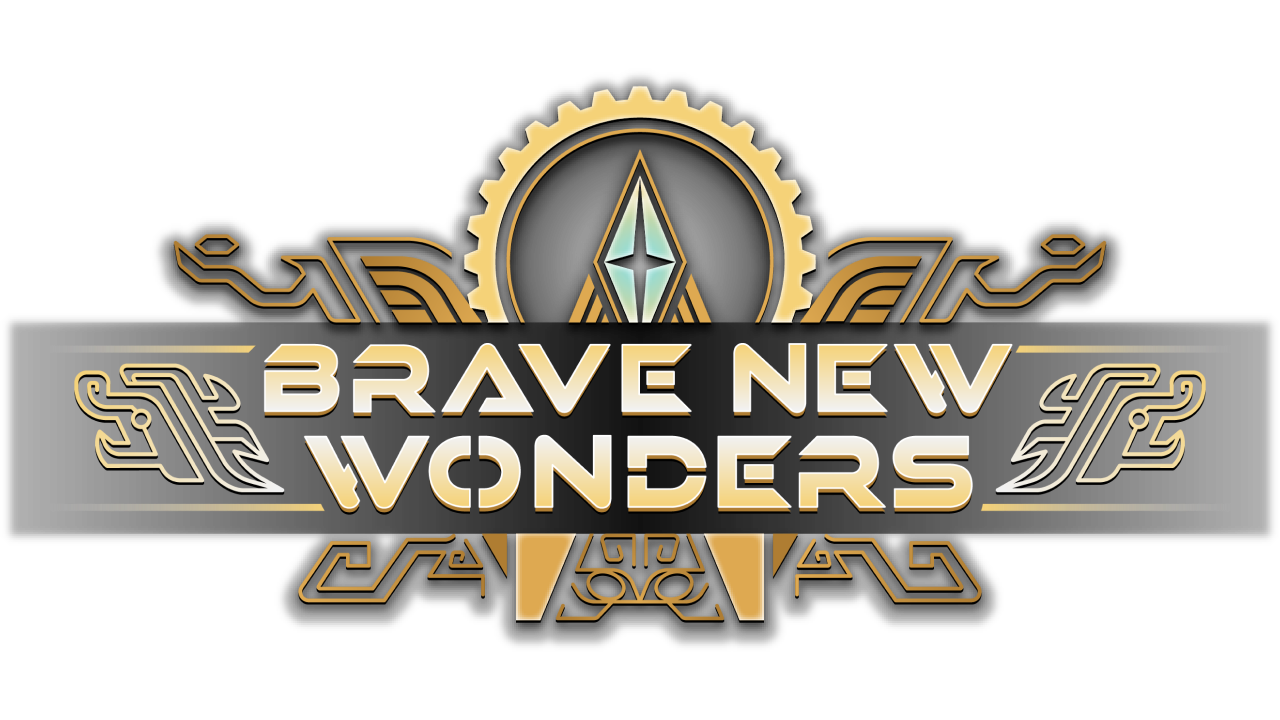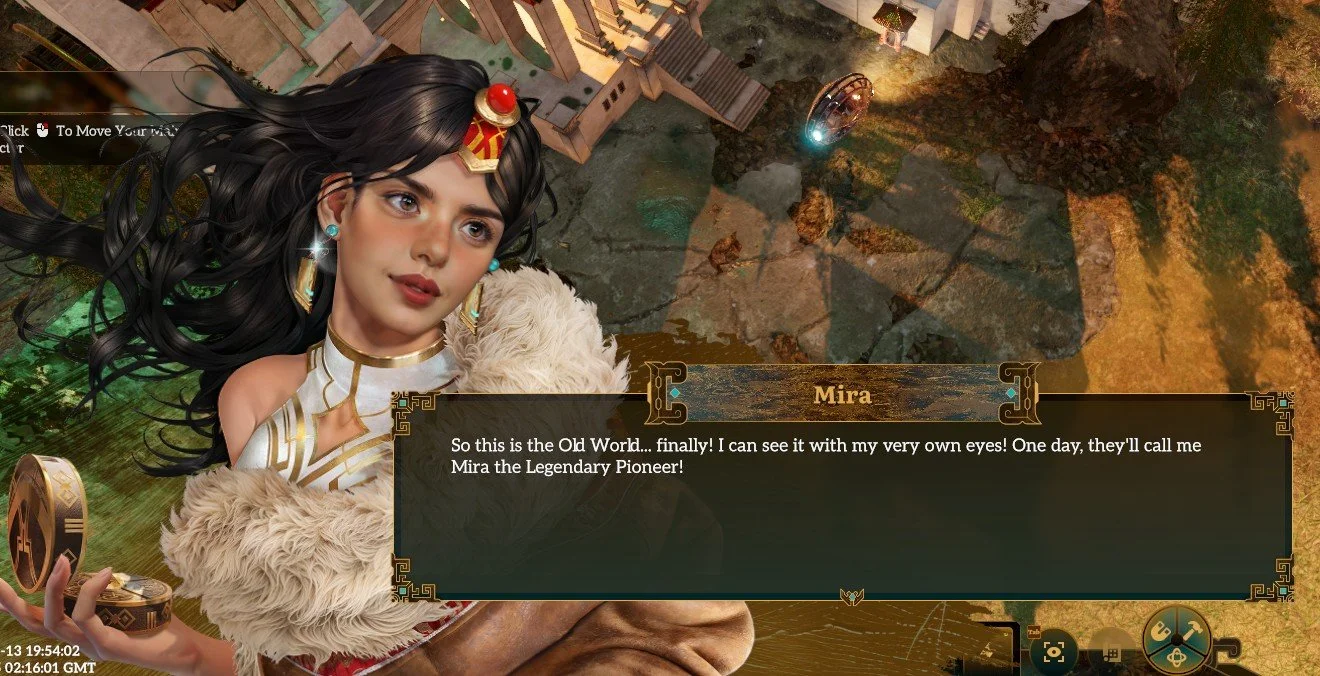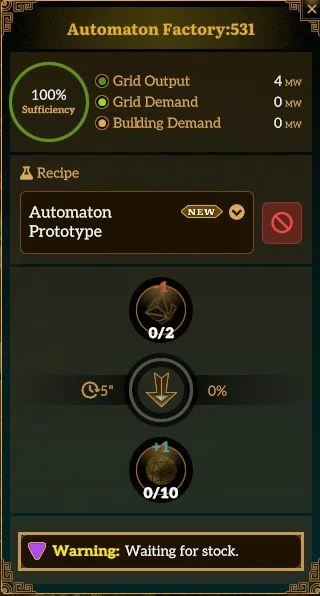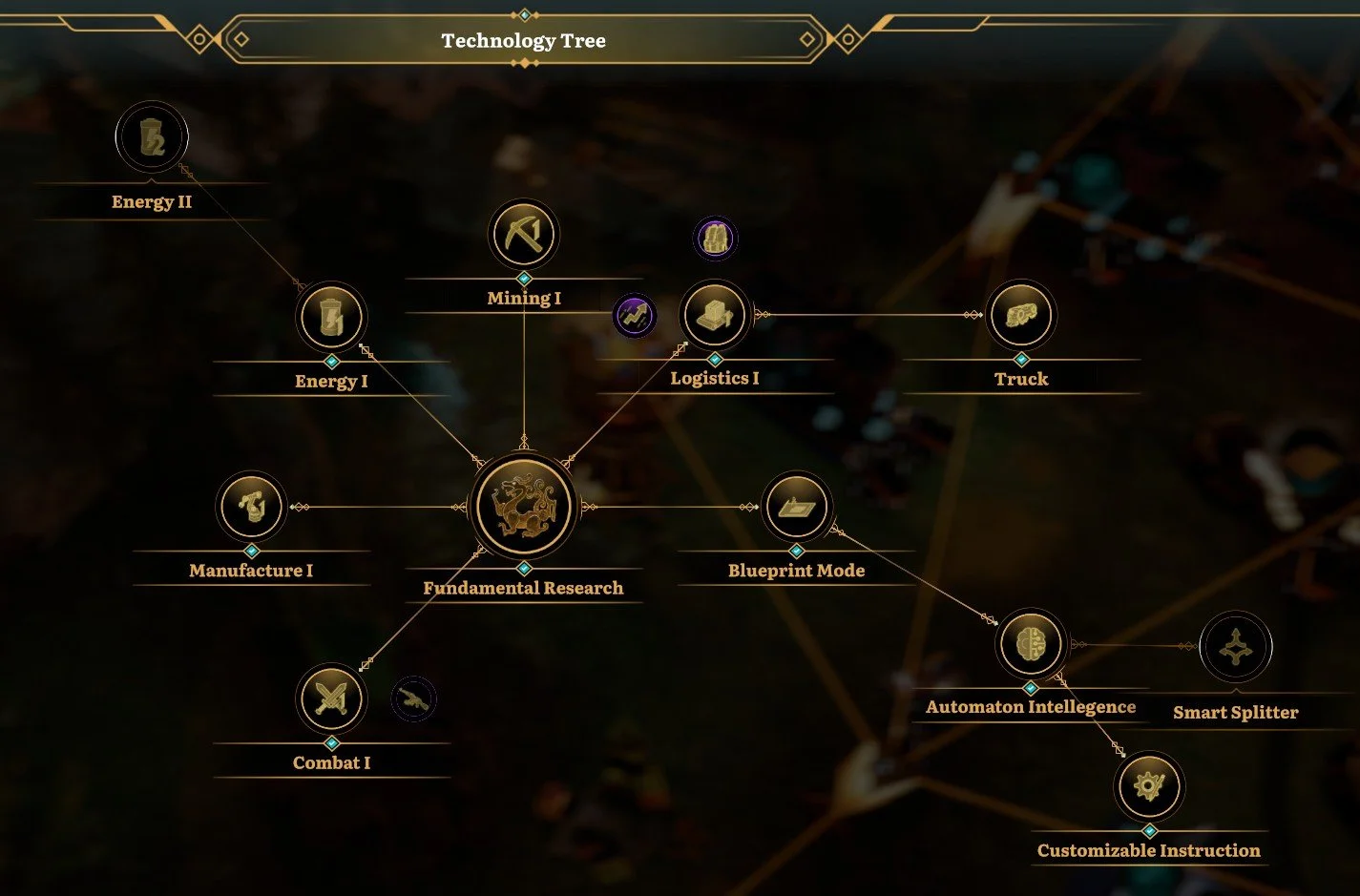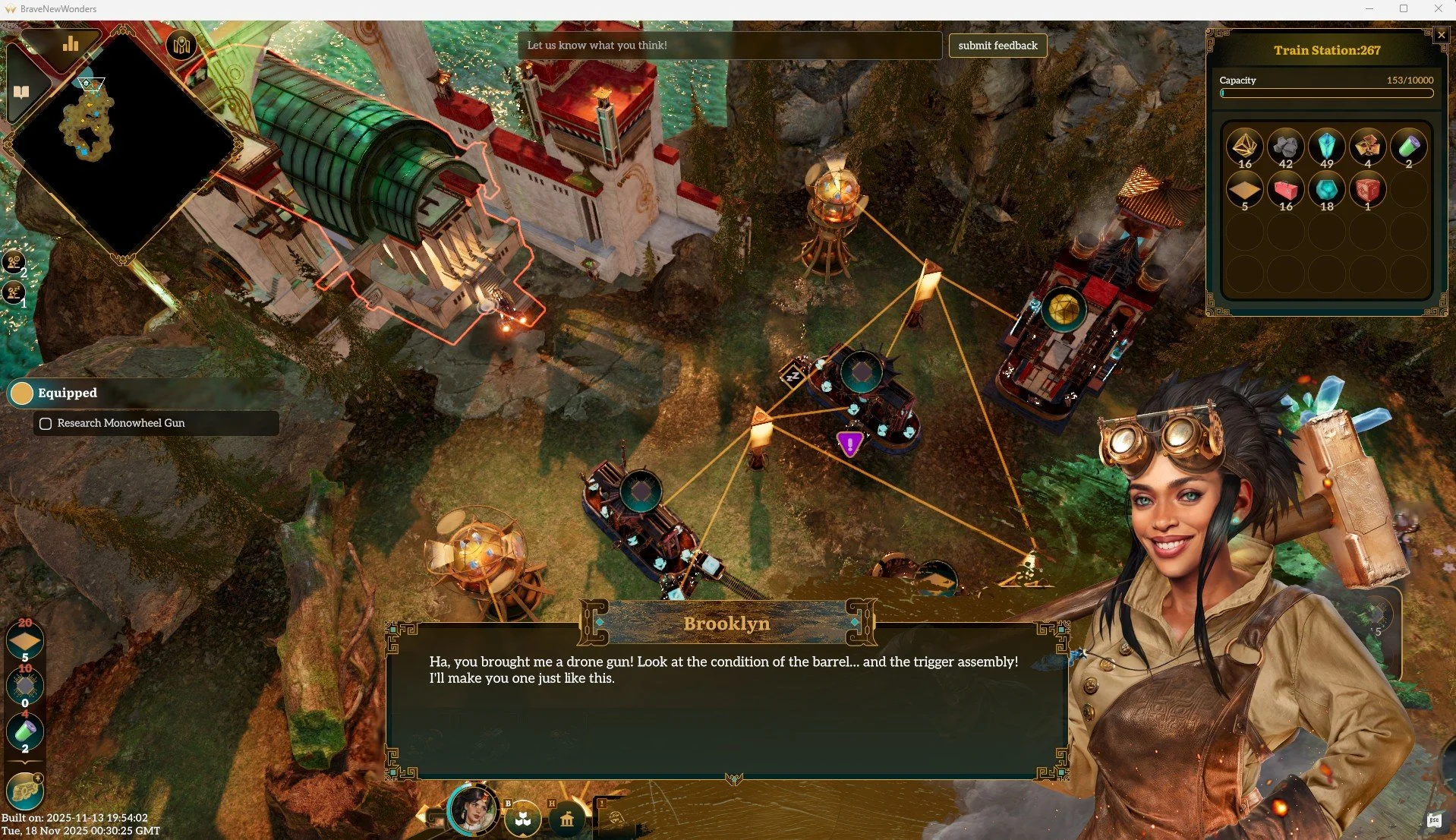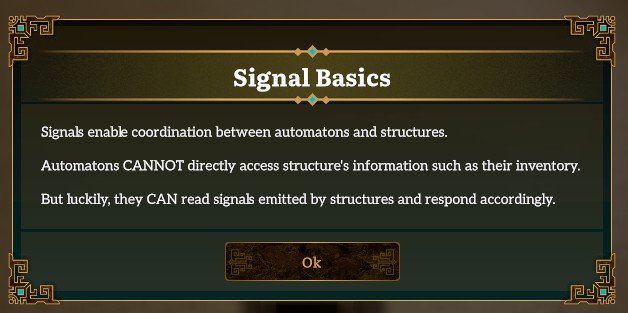Brave New Wonders
What Vibe Coding my own little minions taught me about Bot2Bot logistics
Written By Cervando
Automation, Vibe Coding, and Logistics…
Full disclosure up front, this early access demo of Brave New Wonders was sent to us early by the great people over at City From Naught, the developer of Brave New Wonders, so we could get a taste of what they’re cooking. Onto the demo review:
As some of you may or may not know, I am very much a nerd. I have a background in engineering, computer science, and in being LAZY. So lazy I have automated almost every light switch and outlet in my house because I hate getting up to turn off a switch. This even includes the disco ball in our guest bathroom.
Literally the guest bathroom in our house. We want our guests to have a good time ok?
So my point is that I like automation. I like automation a lot. So when City From Naught reached out to us asking if we’d be interested in playing a demo of their game where you can command intelligent automatons with complex customized instructions based on logic and state machines set in a post-apocalyptic world, my interest was immediately piqued.
What Stuck Out
Before even agreeing to try the early access demo, I went in and looked at the Steam Page to see just what this game was about and read the description:
Command a tribe of intelligent automatons that can interpret ANY customized instruction you give in Brave New Wonders, a factory automation adventure. Pioneer a post-apocalyptic world, explore ruins from the past & discover a mysterious reality as you make your automated factories thrive!
And I am not going to lie, my first reaction was “oh great, even games now are marketing as B2B SaaS IaaS YOLO 6Sigma PMP” but I am happy to report I was wrong.
You see, as I was reading the description on the Steam page, the trailer seen above started playing and I realized that this is not just another <INSERT AI HERE> product I see so much in my day job and in the news. The core game is a logistics and management game, but what it does differently is that it gives the players the ability to write free form natural language commands that are then interpreted into what I can only describe as a custom structured language with conditionals and states. The behavior of your little automatons in everything from supply chain management to resource collection and manufacturing can be orchestrated to depend on signals, conditionals, and on complex fluctuating states of things.
(now I sound like a SaaS 6sigma IaaS salesman)
To put it simply, Brave New Wonders takes the next step of automation by giving players freedom to “compile” and “vibe code” their automatons and assembly lines to build your base, manage your resources and supply chain, explore the world, and discover the story. It doesn’t give you defined blocks like Scratch (the learn to code tool), nor are the automatons just little machines that you have to orchestrate and time without any flexibility.
While other games like Factorio come to mind where you manage ratios, inputs, outputs, and tune your automation, Brave New Wonders hits different due to its open-endedness and flexibility of taking various different, but not overly specialized, constructs and managing them at a natural language level, or once you get the hang of it, at the logical programming level. You still worry about ratios, inputs, and outputs, but now instead of having specialized blocks, you are given a generic automaton and its role and function is left up to you!
The Story
It should be noted that this game is still in development, and the demo does not give a lot insight into the story. What we know is that the main character is a young woman named Mira who wants to explore the “Old World” and be a “Pioneer”. As you progress through the demo you end up finding “old relics” and technology like a cat bubble backpack and other trinkets that hep you upgrade your gear, but go on to show that at some point some calamity occurred, and you are now here exploring remnants of our time through the eyes of a girl in the far future. As I was exploring this all I could think was that if she were to explore my home office thousands of years from now, she’d probably think that ancient humans must have had 8 arms just from the sheer number of mechanical keyboards I have. But I digress.
The little narrative we do get in the game is told through these “still” moving pictures that are common in things like mobile games, where a still photo is given some movement and accents, and speech bubbles to communicate between the various characters
Her hair would do some slight moving and waving, and her compass would twinkle from time to time
I am not going to lie, this is not my preferred style for games. Maybe I’ve just been burned too many times by those mobile games that show that tower defense and then use this style of art to bamboozle you. However, I will not go as far as to say that this is not a valid art style or direction for a game. It’s just not my preference. In this case, after putting my preferences aside, I can honestly say this was not a detraction from the game. The art style of the rest of the game seen in the actual constructs, buildings, and machinery all had a distinct style I can only describe as “solar powered steampunk”. And if I’m being honest, I liked that art style. It felt like the Pacific Northwest and the buildings had that romantic inventor vibe with gears and bits and bobs sticking out in random spots.
Solar powered steampunk computers is not a phrase I thought I’d string together, but I don’t hate it.
The Gameplay
Ok time for the nitty gritty: the gameplay. The game is still in early access/development so of course there were somethings I found could be improved in the UX and UI, but I’ll get into that later. First I want to say that the Demo does a weird mix of simultaneously holding your hand through building and testing some functionality, and then just drops you off the deep end completely in others. The main gist of the game is that there are resources that you have to mine, refine, and even utilize to construct more and more complex machinery or resources. To do this you have to get compute cores and then deploy automatons. The problem is that the game walks you through the process, but doesn’t tell you that you are not this omnipotent being like in SimCity or Civilization V (the only one true Civ, fight me) that you can select resources and move them around. You are in fact a player in this mono wheel of brass and crystal zipping around the map.
This becomes problematic because the game has inventories for each building, the player’s backpack, as well as the main HQ and even the factories as hoppers for raw resources and finished products can be held in the factories. As seen below, the Automaton Factory will have the hopper that says that for 2 raw compute cores, it can produce an automaton and can hold 10 of the completed products.
Furthermore, if your character has resources in her back pack and you want to use them you have to be within range to either deposit or withdraw these resources from a building or warehouse inventory and the distance for where that triggers is not very clear.
The number of times I left resources in the output or wanted to move resources around, but found that my character was just a bit too far from the destination was just enough to be frustrating. Furthermore, the game walks you through establishing mining, and moving resources around utilizing these little automatons you can at first only program to mine and move material from point A to point B, or to move materials between buildings.
These automatons are used to manage your raw materials for refinement and manufacturing, and the game explains that those are things, but doesn’t do much beyond that. It also mentions power and power distirbution, but then throws you off the deep end without really letting you figure out what’s what and how to when you’re energy capped. And that’s how Cervando ended up with the most disorganized base you could possibly imagine.
This is peak efficiency. You may not like it. But accept it.
The game also doesn’t just give you access to everything, instead it meters progression through a technology tree, which is simultaneously one of my raves about this game, and also one of my biggest complaints.
The tech tree limits your velocity in development, much like Civ, Stellaris, Sins of a Solar Empire, and every other game with a tech or skill tree, and I found that the development of the technologies and getting around it made sense, was intuitive, and quite frankly hit the balance of feeling rewarding without feeling burdensome. On the other hand, the tech tree locked one of the biggest selling points of the game, the “customizable instructions” for the automatons using the natural language parsing 3 LAYERS DEEP INTO THE TECH TREE. I am not being hyperbolic when I say for a while during my initial play through I thought that maybe i did get bamboozled after all.
And to make matters worse, in order to get to this feature of the game, the tutorial or demo campaign does little to nothing to guide you towards it. I had to go find it in the tech tree myself. I understand the need for building players to the point where they can do the complicated things, but for a demo I think this could benefit from being more front and center, or at least prioritized in the tutorial as it is one of the biggest draws of the game.
But as I said, I found that at least in the demo, the tech tree struck a fantastic balance of getting you to learn how to use the tools and automatons more intuitively without feeling like prohibitive barrier to entry or advancement, I just wish things were made a bit more clear.
Brooklyn helps you build your gear and introduces you to the tech tree, so she could be more useful for hints or guidance.
Now for a minor UX/UI pet peeve, the tech tree lets you pin whatever research you are gathering resources towards so you know when you have enough, unfortunately it only tells you how many of those resources you have towards the goal in the home base, not overall in your entire fiefdom of automatons, warehouses, or even backpacks. Furthermore, once you do have enough resources, you still have to open the tech tree window, research the tech, and unpin the research. A great quality-of-life improvement would be to allow the players to directly research the technology from that pinned recipe in the home screen and have it clear after research, but that’s just like my opinion man.
Automatons As A Service
Now let’s move onto the actually exciting part: the custom instructions for the automatons. Once you unlock it, the game takes you into a whole tutorial on how to use it. This is great as you already have an idea of what you are using the automatons for but it straight up SUCKS that it took me like an hour to get to this point and this is objectively a cool feature, but then again the tutorial breaks up your game flow.
The tutorial starts by introducing you to the concepts of signals your automatons can understand:
As well as introducing you to the interface for writing the state machine that will govern the automaton. This interface has a component where you can build it graphically, programmatically, or with the real selling point of this game: you describe what you want it to do and the game generates the logic for you vibe coding style. For example, in the image below I told, very programmatically to the automaton: move to point A, then move to point B, then move to point C, then repeat the program. Basically a while true: condition for all you programming nerds.
In the center is the state machine diagram, the top left shows my programmatic input, and the middle left shows the parameters that will need to be defined at runtime for the automaton by selecting what {A} {B} and {C} actually should be. The diagram and some of these parameters were listed when I hit the “Generate” button that ran the description through AI to generate the state diagram.
In other instances, where I used a more natural language approach such as “go around point {A}” the game informed me that these automatons do not have the ability to navigate relative to other things, only to and from, and that they also do not have the ability to maintain a count or the state of a variable. I thought this was interesting as it limits just how these automatons can process data, but in reality they are just the transporters, the state of the system is determined not by the state of the automaton, but rather the state of the endpoints it interacts with. That took me a minute to grasp.
In other cases, I tried just using natural language on the automaton by saying “move to A” and the AI voodoo was able to parse what I meant and even changed the description and prompt to better reflect what the program was supposed to do
The game even lets you know the changes it made and why.
The tutorial does a good job of walking you through how signals of the various endpoints and buildings influence the state of the automaton, but then it asks you to draw the rest of the owl as a final challenge. I am a bit conflicted about this as one part of me liked the challenge, but I can also see how it felt like one minute you’re being asked what 2+2 is and then the exam asks you to calculate the mass of the sun. The problem is as follows:
You’re given an Automaton that can move one unit of fuel. You’re also given a storage warehouse full of fuel. You’re given an artificial sun (used for power generation) and it has a hopper for fuel. It will consume one unit of fuel per 30 seconds. It also has a temperature of the plasma that is affected by how much fuel is in the hopper. The more fuel, the faster it heats up, the less fuel, the slower it heats up and may even cool down. Your task is to automate the power generation so that the temperature is above 20 and below 30 so it doesn’t over heat.
LOL Wut.
So the first thing that I had to determine was that I needed the sun to signal when it was too cold and when it was too hot. And this was done by creating a routine that simplifies in more computing language:
if temp >25:
emit RED
else:
emit GREEN
So if the sun is too hot and cannot take more fuel, it will transmit a RED signal to the automaton, otherwise it says GREEN. Explaining that to the model was easy, and it was able to compile my natural language description pretty easily as seen in this video:
With that out of the way, then came the automaton. There the program got more complicated. In pseudocode:
if sun is GREEN, go to storage grab fuel, and give it to sun;
if sun is RED, take fuel from sun;
wait until sun is green again and put fuel you took out back in;
go back to start;
Not going to lie, while I could write that down in something like Python, figuring out what to do in this case took some flexing of the old brain. My mind originally wanted to just get fuel, take to sun, if sun turns red, take fuel away, if sun turns green again go get more, but i ran into an edge case there where if the automaton was already holding fuel it could not withdraw more so it would just sit there and let my sun get cold. It was as I was working out the kinks of this problem that I realized that this was the strength of this game, getting you to think in logical discrete steps without requiring you to really have to learn a language and while also being FUN. Because I hadn’t realized that up to this point I had already been playing this game for over 2.5 hours.
Ultimately, I gave the design to the automaton AI and had it compile a state machine for me and this was the result:
Closing Thoughts
Moving away from B2B sales for a second and into supply chain management, Brave New Wonders has been an intersection of a lot of interests of mine in a polished and surprisingly fun package. While there are still some improvements to be made in the user experience and optimization, the fact of the matter is that the technology they have utilized to translate between logical natural language instructions to a discrete system described by a state machine, makes my inner computer scientist happy.
While I only had a limited time to play the demo, I found myself already thinking of improvements to my workflow and thinking about my “next run” which games nowadays rarely do for me. Today we are all constantly surrounded AI slop and it seems that every product is looking to integrate AI for no reason at all. Seeing a game integrate natural language processing to interact with machines felt like such an intuitive extension of human/computer interactions and I found myself thinking logically, solving puzzles, and having fun. I look forward to see the future development of this game, and spending even more time debugging my little automatons.
Thank you to the folks over at City From Naught for letting us play the game early and for answering the many questions I had! Be sure to check out Brave New Wonders on Steam and at their website: https://www.cityfromnaught.com/bravenewwonders .
Brave New Wonders Demo will be out soon, and the full game has a target release date of August 2026.


